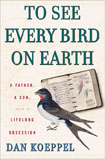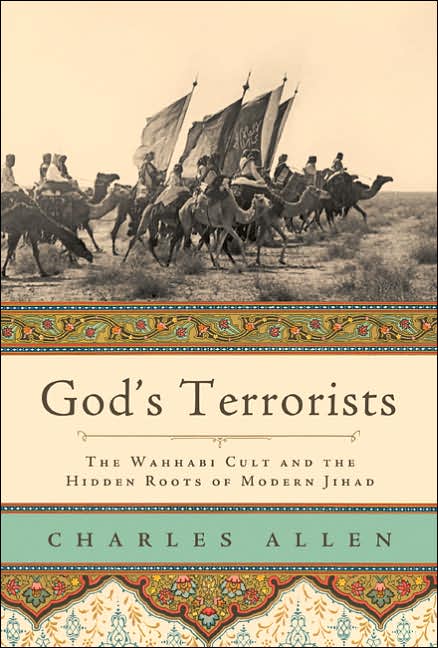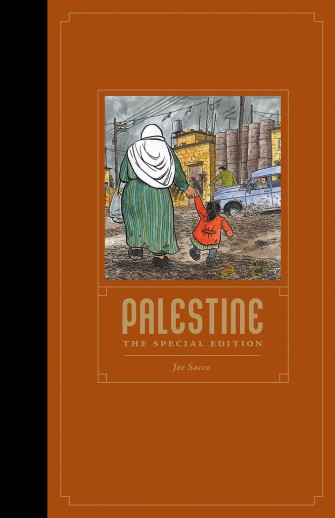I finished Tristessa essentially the night I began reading it. It was quite a ride, for my first Kerouac, and I'm certain that, as one Amazon review states, it will "become the book of Kerouac that I return to most often." It's short but full of little niceties. It was certainly nuanced enough that I couldn't possibly catch everything on the first go--especially for my first dose of his work. I'm not saying it's quite the same, but in many ways I would think it'd be like delving into Joyce by first reading Finnegan's Wake: it could be alienating.
To say the least, it rekindled my interest in writing, and I soon was tacking away on the typewriter in enthusiasm.
 In other news: Dubliners! This is a good trip for a first timer but I think I should start reading it during the day. I don't know what it is about Oxford World Classics, but they refuse to put the annotations in the text (it might have to do with some lofty appeal to the purity of the text). You essentially have to always keep one finger in the back of the book to anticipate any coming annotations, and since almost every sentence contains a street name or some Dublin locale, I'm flipping back and forth constantly, to the point where I'm uncertain whether or not I'm actually comprehending the text as a whole or in little chunks.
In other news: Dubliners! This is a good trip for a first timer but I think I should start reading it during the day. I don't know what it is about Oxford World Classics, but they refuse to put the annotations in the text (it might have to do with some lofty appeal to the purity of the text). You essentially have to always keep one finger in the back of the book to anticipate any coming annotations, and since almost every sentence contains a street name or some Dublin locale, I'm flipping back and forth constantly, to the point where I'm uncertain whether or not I'm actually comprehending the text as a whole or in little chunks.But that might be more a problem with my unfamiliarity with Dublin than anything else. Surely not knowing the city detracts from the enjoyment of the book, or rather, knowing the city would enhance it. Still, the locales are integral to the story, so it's not exactly like I can avoid them...right?
I'll resolve it eventually. Now I know how my professor must have felt last semester when I wrote a historical fiction piece with 50+ annotations.
Moving on! I went to Strand in New York the other day with my father, for Father's Day, and Forbidden Planet. And I can never resist the temptation to buy books!
At Strand, I picked up To See Every Bird on Earth, The Christian World: A Global History, and God's Terrorists: the Wahhabi Cult and the Hidden Roots of Modern Jihad. All of them were marked down significantly, so it felt like a great buy. Now, one by one:
 1) The author of To See Every Bird, Dan Koeppel, came to my school to speak a few months back about freelance journalism and the book business. He read excerpts from this book and his more recent effort, Banana: The Fate of the Fruit That Changed the World. The excerpts were affable and engrossing, and so of course I mentally catalogued him for future reference (his lecture, by the way, was also another factor in helping me orient myself towards writing again). I'm looking forward to reading this one. $6.
1) The author of To See Every Bird, Dan Koeppel, came to my school to speak a few months back about freelance journalism and the book business. He read excerpts from this book and his more recent effort, Banana: The Fate of the Fruit That Changed the World. The excerpts were affable and engrossing, and so of course I mentally catalogued him for future reference (his lecture, by the way, was also another factor in helping me orient myself towards writing again). I'm looking forward to reading this one. $6.2) I picked up The Christian World on an instinct. I wanted it to incorporate into my general Abrahamic religions syllabus that I mentioned a few posts back. Sitting among the other used books, I could tell this one was more high profile and more professional (re: attractive cover), and from my brief perusal definitely seemed interesting. I'm frustrated that I can't seem to find any information online about it.
 I started reading it today and I think it's going to be a good ride. The author, Martin Marty (wonder if he was teased as a kid?), is a pastor of the Lutheran persuasion, so clearly he has some vested interests, but at least so far I'm placated by his sense of responsibility to be scholarly and therefore neutral. He uses C.E., which, as the above linked post explains, makes me happy, and he does go to great pains to not gloss over the "evils" (as he puts it) of Christian history. From my first impression--first chapter, 30 pages--he does definitely have some kind of apologist slant but I'm hoping it won't be a problem.
I started reading it today and I think it's going to be a good ride. The author, Martin Marty (wonder if he was teased as a kid?), is a pastor of the Lutheran persuasion, so clearly he has some vested interests, but at least so far I'm placated by his sense of responsibility to be scholarly and therefore neutral. He uses C.E., which, as the above linked post explains, makes me happy, and he does go to great pains to not gloss over the "evils" (as he puts it) of Christian history. From my first impression--first chapter, 30 pages--he does definitely have some kind of apologist slant but I'm hoping it won't be a problem.Otherwise, I find the prose to be kind of simplistic at times simply because it is so sweeping, but then, as he notes, this might simply be the problem of trying to write a history of the whole of Christian development all across the world in just 288 pages.
Regardless, I'm positive it will be informative, and any potential biases will (hopefully!) be normalised by the (hopefully!) cynical slant of The Battle for God later on in the syllabus.
 3) Finally, I picked up the very attractive (again, aesthetically speaking--covers just speak to me) God's Terrorists, by Charles Allen. I'd read about Wahhabism a bit in Fromkin's A Peace to End All Peace (see here), and of course as such an important part of Islamic history I decided I needed to brush up on it.
3) Finally, I picked up the very attractive (again, aesthetically speaking--covers just speak to me) God's Terrorists, by Charles Allen. I'd read about Wahhabism a bit in Fromkin's A Peace to End All Peace (see here), and of course as such an important part of Islamic history I decided I needed to brush up on it.I'm hoping the alarmist title doesn't hint at the tone of the book--one Amazon reviewer does note that he "was completely let down by the author's brief and poorly argued conclusion...[which] seemed thrown-in as an after thought," so I will be wary (then again, the title of his review was "A Warning to Western Civilization." Hmm...mixed messages.
Anyway, this'll segue well into the Forbidden Planet excursion.
 I'd never been there before, and I was pleasantly surprised when I arrived. A very decent selection and humble atmosphere--though what do I know as only an onlooker of comics from the periphery? I was browsing wracking my brains for comics on my list that weren't things like Transmetropolitan or The Watchmen (no hard feelings--I will read them someday, but I was craving something different, something more palpable), and I remembered a graphic novel a friend at school recommended me, Palestine.
I'd never been there before, and I was pleasantly surprised when I arrived. A very decent selection and humble atmosphere--though what do I know as only an onlooker of comics from the periphery? I was browsing wracking my brains for comics on my list that weren't things like Transmetropolitan or The Watchmen (no hard feelings--I will read them someday, but I was craving something different, something more palpable), and I remembered a graphic novel a friend at school recommended me, Palestine.I was in luck. They had 3 copies. Joe Sacco's graphic novel--or I should say, comic, since the term 'graphic novel' is loathsome marketing junk according to Sacco--is a vivid (and sometimes harrowing) account of his trip to the Palestinian territories, drawn laboriously in the gangly R. Crumb tradition. The 'magnum opus,' as he sometimes refers to it himself in the comic, is a page-turner: I finished it in a day, though it is a "comic." I don't mean this pejoratively; I simply mean that I like the pretty pictures and it goes by quickly.
The narrative is just naive and self-deprecating enough to be affable, though at times it may try a bit too hard at this. The politics, of course, is the meet of it, and what's good is that Sacco tends to let characters talk for themselves. He interjects his own opinions often, but there are many monologues and interludes with the book's eclectic cast, each telling their stories. Having just finished Fromkin's excellent history, I did spot a few inaccuracies (or at least "glossings-over," but no harm no foul I guess), but otherwise the ground-level view of quotidian Palestinian life is heart-wrenching. It really helps that this
Visually, as I said, it is superb. I have always had an instinctive negative reaction against the unctuous, hairy, organic style (I could never watch Ren & Stimpy as a kid), but I think Sacco hits the sweet spot. It's not "gross," but there's just enough grit and grime to get you really feeling and seeing all the melancholy and humility (in the sense of their humanity--not always their personality) of the Palestine's inhabitants/landscapes. I was frustrated at how Sacco drew himself, however: this ultimate act of self-deprecation portrays the man as an ugly skin-and-bones nerd with huge lips. But in the portrait--he's so handsome! I can't forgive him for that one. See for yourself:


But I kid. Ultimately I have no weighty qualms about the book yet (I will certainly have to flip through it a few more times to let some of the images/prose sink in more), though I might have to sit on a few of the ideas presented.
I didn't buy anything else at Forbidden Planet, but my brother got the Sam and Max "Surfin' the Highway Anniversary Edition," and some other thing which I can't quite remember but will find out about shortly. I am looking forward to devouring them in the coming days!
Phew! What a post. I will be back, dear readers, with more bookish updates soon!
8 comments:
I bookmarked your blog and will begin reading soon. =]
being in the strand is like having to eat your way out of a house made of chocolate. (you know, a task that by all rights should be wonderful but in fact will ultimately destroy you, etc.)
also, you of all people might really like my all-time favorite book ever, G.K. Chesterton's The Man Who Was Thursday. it's slim and glorious, an excellent combination.
Найти лучшее: скачать гей фильмы с letitbit
no prescription phentermine phentermine 30 mg time release - buy cheap phentermine 37.5 online no prescription
Eurycoma longifolia has different names in different parts with the country including bidara laut, babi kurus, and tongkat ali. It's a flowering plant indigenous to South East Asia, especially Indonesia and Malaysia. Pasak Bumi can be described as small evergreen tree which may grow up to 15 m (50 feet) in height. All parts of your plant taste bitter but have great medicinal properties. Although it functions as an anti-malarial and anti-diabetic herb furthermore, pasak bumi is mostly famous for its ability to enhance libido and enlarge the male vital organ.
http://sizegenetics-reviewx.tumblr.com/
[url=http://www.freewebs.com/trazodone-buy]trazodone buy canada
[/url]
[url=http://www.freewebs.com/duloxetine-online/]duloxetine buy online
[/url] cymbalta quitting
cymbalta contraindications
xeristar ottimo
[url=http://buy-methylprednisolone.webspawner.com/]medrol dosepak injection
[/url] buy neo medrol acne lotion uk
methylprednisolone dosage for dogs
methylprednisolone for copd exacerbation
Post a Comment